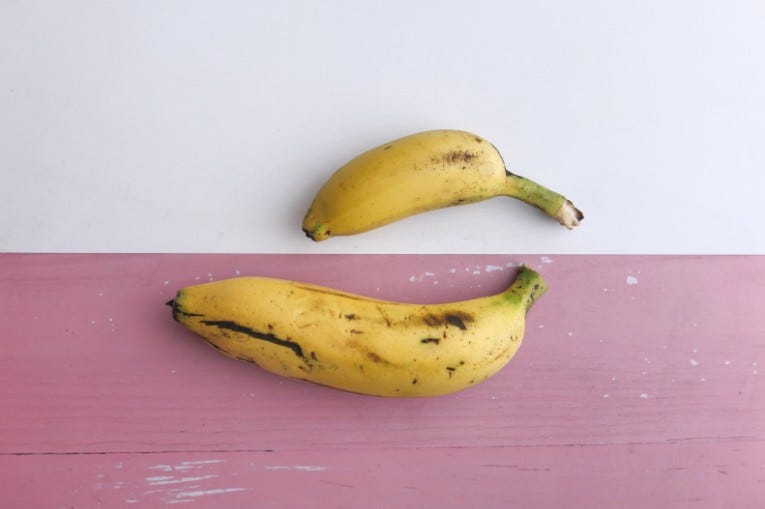Year 2 on Substack: Writing consistently without burning out (part 2)
Cut to a year later—I started to feel a tiny sense of dread each time I had to come up with my next piece.
Hi friends,
This is the second part of a two-part article. Read the first article here.
Having a professional background in marketing and content strategy, I knew a regular schedule for publishing was important.
I wrote a newsletter nearly every week, and I’m not going to lie—it ate up a big chunk of my time—I’d say at least five to 10 hours a week.
Cut to a year later—I started to feel a tiny sense of dread each time I had to come up with my next piece. To me, this indicated that a newsletter-a-week pace wasn’t sustainable for me. I wanted to make changes to write less but continue growing my subscribers.
I started to research in-depth and see what other Substackers were doing to grow their subscribers and figure out how I could implement some of the strategies.
How much content to put out without taking up too much time
I wrote furiously for my first year on Substack, posting diligently each week. Creating a newsletter a week was a lot of work, and honestly, I don’t know how other people write and put out podcasts and stay engaged with the community. 🥵 Maybe it’s their full-time job and they’re making a sustainable living from it… to which I say, wow and kudos, and I am insanely jealous!
There were so many moments when I wished writing for my Substack and engaging with the community was my full-time job. Maybe someday…
But writing a post a week was making me feel burnt out. When I started to feel the little inklings of dread each time I had to plan and write my next Substack, I decided to scale back my newsletters to twice a month. At first, I worried that slowing down would hinder my subscriber growth. But then I thought about how my first year on Substack (focusing on putting out great content and connections) was starting to pay off.
Through those relationships, guest posting, sharing other people’s stories, gaining more recommendations from other Substacks, and whatever else the algorithm was doing, was helping me to gain subscribers consistently.
When I made a conscious decision to scale back, I felt less stressed and overwhelmed. Because I wasn’t putting out as many newsletters, I wanted to create more ways of showcasing my site so new and existing subscribers could easily see what content I had.
Here are a few small tips to help you do the same:
1. Promote relevant “next reads” at the bottom of each newsletter
I started being more mindful of promoting previously published newsletters in each new post. I did this because one, I created in-depth newsletters that I was really proud of, and two, I wanted to let new subscribers know about all the great content they had access to.
2. Organize your site
I created categories and then put them in the top tabs to help people navigate and get directly to what they were interested in reading. Categories include:
Writer Tips
Chapters (from my memoir)
My Favs (books, podcasts, movies, what I’m loving at the moment)
Substack Stuff (how to grow your following)
Life
About
Site organization is super important so people can understand what you’re all about just by glancing at the homepage. Substack makes this easy for you to do in the dashboard and has various layouts for your homepage too.
If you’re constantly feeling stressed about the next post you’re going to put out or feeling behind, that’s an indication that maybe you’re doing too much and need to scale it back. Try to find a balance of how much content to put out by examining your schedule but also to keep a pulse on how you feel.
3. Mindset
The most important thing I learned about Substack is how much of a mind f*ck it can be. When I first joined, I noticed other people gaining subscribers so quickly, I wondered what they were doing that I wasn’t.
To be fair, some people’s posts went viral on Notes or included in a roundup-type post that landed on Substack’s newsletter that goes to everyone. (I just Googled how many people are on Substack and it said over 20 million monthly active subscribers!)
I saw all these other people gaining subscribers and writing about how they were “winning,” while I was not. They posted data from their dashboards to prove their point. While I was happy for them and hopeful that it may one day happen for me, there were so many moments when I felt like a failure because my organic growth felt so slow.
Maybe the reason they were growing so fast was because of the topics they wrote about or their ability to engage with their audience through chats or notes. I’d start making the comparisons and wonder what they were doing right and what I was doing wrong.
But I realized it’s not about a number (even though it kind of is about a number? 🤔). I tried not to fixate on the number. Rather, I focused on the process of writing, connecting with the community, and putting out good work.
So… back to this number
When I initially started Memoir Junkie Wannabe Author I kept wondering how I would grow my subscribers from the 30 friends and family. Today I’m approaching the 500 mark, with a handful of paid subscribers too! (Quick tip: Turn on your paid subscription. Just do it.)
For some, 500 is a drop in the bucket, but for me, it’s a big deal. 🥳 I hope my subscribers are engaged and find value in what I share.
My hope for Substack is to continue what I’m doing and build meaningful relationships with other writers, my audience, and keep learning. I hope in the years to come, I’ll gain even greater insights and growth.
For further reading, here are some additional articles you can read.
What have you learned in your Substack adventure? Share them with me in the comments!
Also, if you liked this two part piece, make sure to subscribe to my Substack, too.
If you saw value here, I hope you’ll consider becoming a paid member to help foster more of this type of thing. As a member, you’ll get access to over 600 exclusive posts, including books, courses, lessons, lectures, fiction books, and more, or you can give us a one-time tip to show your support.










Thanks for the tips. As a marketer myself I get your way of thinking and approach and it's working. At my job, our company newsletter switched from monthly to bi-monthly from my suggestion and our content was richer for it without impacting our open rate. This was a great post. Very helpful for a newbie like me, thanks! 😊
This is so relatable. Acknowledging my limited time and capacity, and posting only when the content is ready at the pace that I'm most comfortable with, is what makes me enjoy writing.
Most importantly, it keeps me writing.